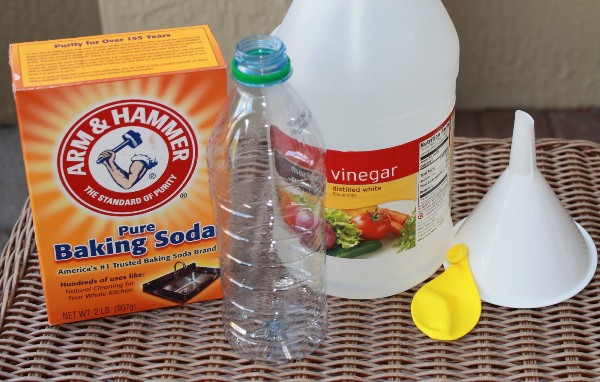How to Blow Up a Balloon with Baking Soda and Vinegar

When baking soda (called sodium bicarbonate) and vinegar (called acetic acid) are mixed together, a chemical reaction takes place which results in the formation of carbon dioxide as one of the products. This carbon dioxide can be used in filling up a balloon. The procedure to do so has been described in this article.
Things Required:
– 16.9 oz. plastic bottle (clean from the inside)
– Large Balloon
– Two spoons
– 2 tbsp of vinegar
– 1 tsp of baking soda
Instructions
-
1
Add 2 tbsp of vinegar to a 16.9 oz. plastic bottle placed on a flat surface. Be careful not to spill vinegar out of the bottle. Make sure that the plastic you use is clean from the inside and does not contain anything that might start a chemical reaction of its own with vinegar.
-
2
Get a balloon and open its mouth with your fingers. Stretch the balloon’s opening carefully by placing your fingers inside it.
-
3
While you are keeping the mouth of the balloon open, ask a friend to add exactly 1 tsp of baking soda into the balloon. Make sure that you friend uses a spoon different than the one you used earlier for adding vinegar to the plastic bottle. Moreover, you would need to get the quantity of both vinegar and baking soda spot on to ensure that the right amount of carbon dioxide gas is produced.
-
4
Manoeuvre the balloon sideways to ensure that all baking soda in the balloon reaches its ultimate destination; the 16.9 oz. plastic bottle.
-
5
Observe the changes taking place inside the plastic bottle. Closely observe the balloon as it fills up with carbon dioxide gas and then eventually pops up. If the pressure bcomes too high remove the balloon.
-
6
If you are blowing up the balloon with baking soda and vinegar as part of a school project, be sure to note down your observation while you are performing the experiment. No matter how sharp you memory is, it is always better to write things down on paper.





